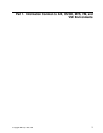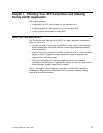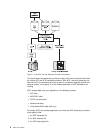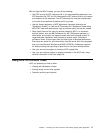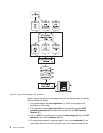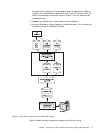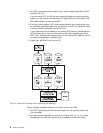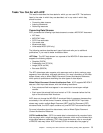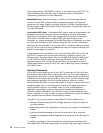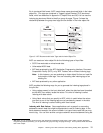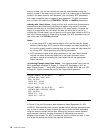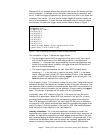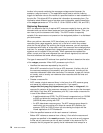Tasks You Can Do with ACIF
This section describes the three tasks for which you can use ACIF. The tasks are
listed in the order in which they are described, not in any order in which they
should be done.
Converting data streams
Indexing documents
Retrieving resources
Converting Data Streams
ACIF processes the following input data streams to create a MO:DCA-P document.
AFP data
MO:DCA-P data
S/370 line-mode data
Line-mode data
Mixed-mode data
Unformatted ASCII (AIX only)
The following sections describe each type of data and refer you to additional
publications, if you need to better understand them:
AFP Data:
The AFP data stream is a superset of the MO:DCA-P data stream and
supports the following objects:
Graphics (GOCA)
Presentation text (PTOCA)
Image (IOCA and IM)
Bar-code (BCOCA)
The AFP data stream also supports print resources such as fonts, overlays, page
segments, form definitions, and page definitions. For more information on this data
stream format, refer to
Mixed Object Document Content Architecture Reference
,
which points to publications describing the other types of data objects.
Mixed Object Document Content Architecture Data:
ACIF supports MO:DCA-P
data as a valid input data stream, with the following restrictions:
Every structured field must appear in one record and cannot span multiple
records.
Each record (structured field) must contain a X'5A' character before the first
byte of the structured field introducer.
ACIF does not change the MO:DCA-P structured fields it processes, because they
are already in the correct format. However, although the MO:DCA-P input data
stream may contain multiple Begin Document (BDT) and End Document (EDT)
structured fields, the ACIF output contains only one BDT/EDT structured-field pair.
For more information about this data stream, refer to
Mixed Object Document
Content Architecture Reference
.
S/370 Line-Mode Data:
S/370 line-mode data is characterized by records of data
that may begin with a single carriage control character, which may be followed by a
single table reference character (TRC). After these characters, zero or more bytes
of EBCDIC data may follow. ACIF formats S/370 line-mode data into pages by
Chapter 1. Planning Your AFP Conversion and Indexing Facility (ACIF) Application 9



